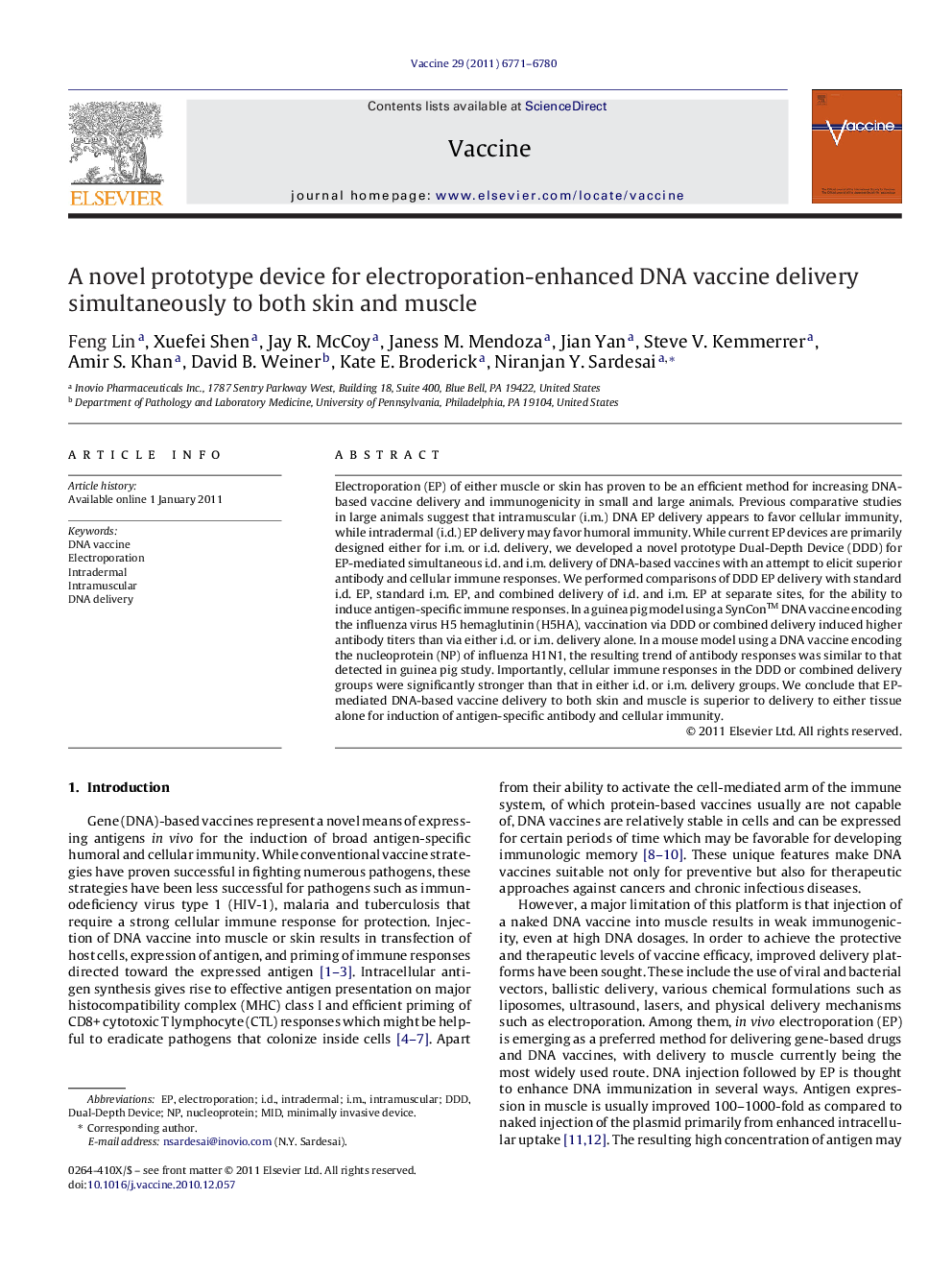| Article ID | Journal | Published Year | Pages | File Type |
|---|---|---|---|---|
| 2403074 | Vaccine | 2011 | 10 Pages |
Electroporation (EP) of either muscle or skin has proven to be an efficient method for increasing DNA-based vaccine delivery and immunogenicity in small and large animals. Previous comparative studies in large animals suggest that intramuscular (i.m.) DNA EP delivery appears to favor cellular immunity, while intradermal (i.d.) EP delivery may favor humoral immunity. While current EP devices are primarily designed either for i.m. or i.d. delivery, we developed a novel prototype Dual-Depth Device (DDD) for EP-mediated simultaneous i.d. and i.m. delivery of DNA-based vaccines with an attempt to elicit superior antibody and cellular immune responses. We performed comparisons of DDD EP delivery with standard i.d. EP, standard i.m. EP, and combined delivery of i.d. and i.m. EP at separate sites, for the ability to induce antigen-specific immune responses. In a guinea pig model using a SynCon™ DNA vaccine encoding the influenza virus H5 hemaglutinin (H5HA), vaccination via DDD or combined delivery induced higher antibody titers than via either i.d. or i.m. delivery alone. In a mouse model using a DNA vaccine encoding the nucleoprotein (NP) of influenza H1N1, the resulting trend of antibody responses was similar to that detected in guinea pig study. Importantly, cellular immune responses in the DDD or combined delivery groups were significantly stronger than that in either i.d. or i.m. delivery groups. We conclude that EP-mediated DNA-based vaccine delivery to both skin and muscle is superior to delivery to either tissue alone for induction of antigen-specific antibody and cellular immunity.
